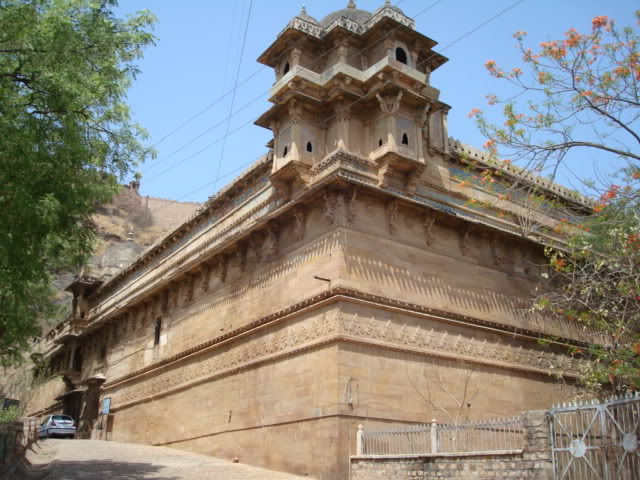Gujari Mahal Archeological Museum on:
[Wikipedia]
[Google]
[Amazon]

 The Gujari Mahal Archeological Museum or State Archaeological Museum, sometimes called the "
The Gujari Mahal Archeological Museum or State Archaeological Museum, sometimes called the "

 The Gujari Mahal Archeological Museum or State Archaeological Museum, sometimes called the "
The Gujari Mahal Archeological Museum or State Archaeological Museum, sometimes called the "Gwalior Fort
The Fort of Gwalior or the Gwalior Fort is a 6th century defence hill fort in Gwalior, India. Mughal Emperor Babur called it the "pearl amongst the fortresses of Hind" because of its impregnability and magnificence and it has also been nickna ...
Museum", is a state museum in Gwalior
Gwalior (Hindi: , ) is a major city in the central Indian state of Madhya Pradesh; It is known as the Music City of India having oldest Gwalior gharana, musical gharana in existence. It is a major sports, cultural, industrial, and political c ...
, located in the fortress of Gujari Mahal. It displays numerous artifacts of the region, including a fragment of the Garuda capital of the Heliodorus pillar
The Heliodorus pillar is a stone column that was erected around 113 BCE in central India in Besnagar (Vidisha), Madhya Pradesh. The pillar is commonly named after Heliodorus (identified by him as a Garuda-standard), who was an ambassador of the In ...
from Vidisha
Vidisha (विदिशा, formerly known as Bhelsa and known as Besnagar and Bhaddilpur in ancient times) is a city in Indian state of Madhya Pradesh and the administrative headquarters of Vidisha district. It is located 62.5 km north ...
.
The palace of Gujari Mahal
was built by Tomar Rajput
Tomar (also called Tomara) is a clan name, some members of which ruled parts of North India at different times. They are Rajputs and claim Chandravanshi descent.
Most of their population is primarily concentrated in Delhi, Haryana- Torawati and ...
ruler Man Singh Tomar
Man Singh Tomar (IAST: Mānasiṃha) was a Tomar ruler of Gwalior who ascended the throne in 1486 CE.
History
Maharaja Man Singh Tomar was born to Raja Kalyanmall, the Tomar Rajput ruler of Gwalior. He ruled for over 30 years. In his years ...
for his wife Mrignayani who belonged to Gujjar
The Gurjar (or Gujjar, Gujar, Gurjara) are an agricultural ethnic community, residing mainly in India, Pakistan, and Afghanistan, divided internally into various clan groups. They were traditionally involved in agriculture, pastoral and nomadic ...
tribe. She demanded a separate palace for herself with a regular water supply through an aqueduct from the nearby Rai River. The palace has been converted into an archaeological museum. Rare artifacts at the museum include Hindu
Hindus (; ; also known as Sanātanīs) are people who religiously adhere to Hinduism, also known by its endonym Sanātana Dharma. Jeffery D. Long (2007), A Vision for Hinduism, IB Tauris, , pp. 35–37 Historically, the term has also be ...
and Jain sculptures dated to the 1st and 2nd centuries BCE, miniature statue of Salabhanjika
A salabhanjika or shalabhanjika is a term found in Indian art and literature with a variety of meanings. In Buddhist art, it means an image of a woman or yakshi next to, often holding, a tree, or a reference to Maya (mother of the Buddha), Maya ...
, terracotta
Terracotta, also known as terra cotta or terra-cotta (; ; ), is a clay-based non-vitreous ceramic OED, "Terracotta""Terracotta" MFA Boston, "Cameo" database fired at relatively low temperatures. It is therefore a term used for earthenware obj ...
items and replicas of frescoes
Fresco ( or frescoes) is a technique of mural painting executed upon freshly laid ("wet") lime plaster. Water is used as the vehicle for the dry-powder pigment to merge with the plaster, and with the setting of the plaster, the painting become ...
seen in the Bagh Caves
The Bagh Caves are a group of nine rock-cut monuments, situated among the southern slopes of the Vindhya Range in Bagh town of Dhar district in Madhya Pradesh in central India. These monuments are located at a distance of 97 km from Dh ...
.
References
Museums in Madhya Pradesh Buildings and structures in Gwalior Education in Gwalior Archaeological museums in India Tourist attractions in Gwalior Rajput architecture {{MadhyaPradesh-geo-stub